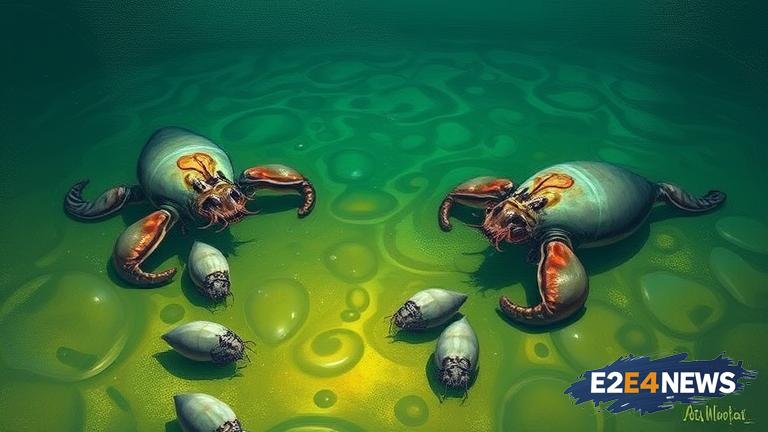The annual cuttlefish gathering in South Australia, a spectacle that attracts thousands of visitors and generates significant revenue for the local economy, is under threat due to a deadly algal bloom. The bloom, which has been identified as a species of dinoflagellate, has already caused widespread damage to the marine ecosystem, with reports of dead fish and other marine life washing up on beaches. The cuttlefish gathering, which typically takes place in the waters off Whyalla, is a critical component of the region’s tourism industry, with many businesses relying on the event to generate income. However, with the algal bloom showing no signs of abating, there are growing concerns that the gathering may not be able to take place as scheduled. The algal bloom is not only a threat to the cuttlefish, but also to other marine species, including fish, dolphins, and even humans. Exposure to the toxins produced by the bloom can cause a range of health problems, from skin irritation to respiratory issues. The South Australian government has issued warnings to the public, advising them to avoid swimming in areas where the bloom is present. Despite these warnings, many people are still flocking to the area, eager to catch a glimpse of the cuttlefish. However, with the bloom posing such a significant threat, it is unclear whether the gathering will be able to proceed as planned. The cuttlefish gathering is not just an important economic event, but also a culturally significant one, with many locals relying on the event to connect with their heritage. The gathering is also an important opportunity for scientists to study the cuttlefish, which are considered to be one of the most intelligent invertebrates on the planet. Researchers from the University of Adelaide have been studying the cuttlefish in the area, and have expressed concerns about the impact of the algal bloom on the species. The university’s Dr. Maria Rodriguez, a leading expert on cuttlefish, has warned that the bloom could have a devastating impact on the local population, potentially even driving them to extinction. The Australian government has announced plans to provide funding to support the affected communities, but many are calling for more to be done to address the root causes of the problem. The algal bloom is just one of a number of environmental challenges facing the region, with climate change, pollution, and overfishing all taking a toll on the marine ecosystem. The cuttlefish gathering is just one example of the many ways in which human activities are impacting the environment, and the need for sustainable practices to be adopted. The South Australian government has pledged to work with local communities and stakeholders to develop a plan to mitigate the impact of the algal bloom, but it remains to be seen whether these efforts will be enough to save the cuttlefish gathering. In the meantime, the public is being urged to remain vigilant and to report any sightings of the algal bloom to the authorities. The cuttlefish gathering is a beloved event, and it is imperative that everything possible is done to protect it. The event is not just important for the local economy, but also for the environment, and the many people who rely on it for their livelihood. As the situation continues to unfold, one thing is clear: the future of the cuttlefish gathering hangs in the balance, and it will take a concerted effort to ensure its survival. The algal bloom is a stark reminder of the need for sustainable practices and the importance of protecting the environment. The cuttlefish gathering is a unique and special event, and it is imperative that everything possible is done to preserve it for future generations. The event is a source of pride for the local community, and its loss would be deeply felt. The South Australian government must take immediate action to address the issue, and work with local stakeholders to develop a plan to mitigate the impact of the algal bloom. The cuttlefish gathering is a national treasure, and it is imperative that it is protected. The event is a critical component of the region’s tourism industry, and its loss would have significant economic and cultural implications. The algal bloom is a wake-up call, and it is imperative that we take action to address the issue before it is too late.
